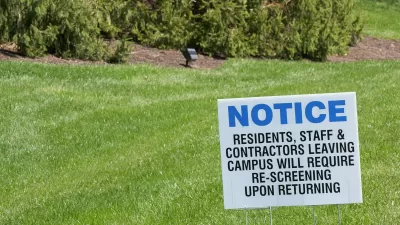We've long focused on the *what* when providing housing for seniors. Today Hazel Borys reminds us that the *where* is equally critical, if not more so.
"Last month we talked about Connections, Community, and the Science of Loneliness, in which I lamented my parents’ generation lack of active communities geared toward people of all ages," says Borys. "Since then, I’ve looked a little more deeply into some of the newer neighborhoods designed around livability, to see which of them are offering especially graceful aging options."
"My partner Ben Brown has pointed out that nothing in our $51 billion dollar age-segregated housing market provides quality of life that matches dwelling among our extended families. What if that market offered smaller homes — like cottages, condos, and row houses — within walking distance to both daily needs and larger family homes? Within walking distance from kids and grandkids? The most successful age-segregated housing taps into nearby communities, whether historic neighborhood centres, or newer mixed-use developments. Co-housing and multigenerational communities are advanced solutions."
Borys goes on to look into solutions currently in place at Kentlands and a number of other TNDs across the US. She then offers up an illustrative plan of what a Continuous Care Retirement Community (CCRC) would look like fully integrated into a walkable Main Street neighborhood.
FULL STORY: Serving the Needs of Seniors: Solutions in practice

Planetizen Federal Action Tracker
A weekly monitor of how Trump’s orders and actions are impacting planners and planning in America.

Maui's Vacation Rental Debate Turns Ugly
Verbal attacks, misinformation campaigns and fistfights plague a high-stakes debate to convert thousands of vacation rentals into long-term housing.

San Francisco Suspends Traffic Calming Amidst Record Deaths
Citing “a challenging fiscal landscape,” the city will cease the program on the heels of 42 traffic deaths, including 24 pedestrians.

Amtrak Rolls Out New Orleans to Alabama “Mardi Gras” Train
The new service will operate morning and evening departures between Mobile and New Orleans.

The Subversive Car-Free Guide to Trump's Great American Road Trip
Car-free ways to access Chicagoland’s best tourist attractions.

San Antonio and Austin are Fusing Into one Massive Megaregion
The region spanning the two central Texas cities is growing fast, posing challenges for local infrastructure and water supplies.
Urban Design for Planners 1: Software Tools
This six-course series explores essential urban design concepts using open source software and equips planners with the tools they need to participate fully in the urban design process.
Planning for Universal Design
Learn the tools for implementing Universal Design in planning regulations.
Heyer Gruel & Associates PA
JM Goldson LLC
Custer County Colorado
City of Camden Redevelopment Agency
City of Astoria
Transportation Research & Education Center (TREC) at Portland State University
Jefferson Parish Government
Camden Redevelopment Agency
City of Claremont





























